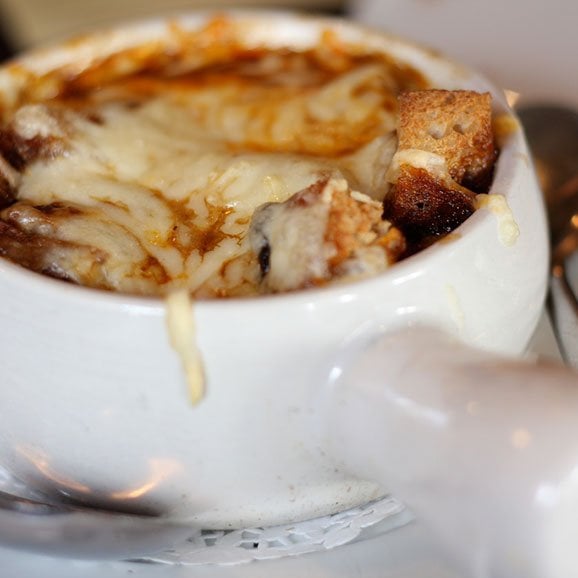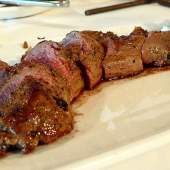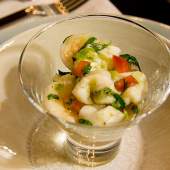France

“In France, cooking is a serious art form and a national sport.”
— Julia Child
“The French approach to food is characteristic; they bring to the consideration of the table the same appreciation, respect, intelligence, and lively interest that they have for the other arts, for painting, for literature, and for the theatre.”
— Alice B. Toklas
You have surely heard the French phrase “joie de vivre,” which in English means “joy of living.” For the French, this applies to all aspects of everyday life, especially the cuisine. In a country where most businesses are shuttered between noon and 2:00 pm so that workers can enjoy their lunch at leisure, where quality is more important than quantity, and where what you eat is meant to buoy you up rather than weigh you down, it’s not surprising that the sophisticated French approach to the culinary arts is aspirational for many Americans.
In honor of one of this week’s restaurants, Café Marie-Jeanne, let’s take a closer look at a few French classics. We’ve already covered fondue and champagne, and discussed how Thomas Jefferson made crème brûlée and pommes frites (French fries) a thing in America (thank you, Mr. President!). Here are some others:
- Coq au vin (“chicken in wine”) has been around since the ancient Romans, and may have been enjoyed by Julius Caesar. It was originally composed of rooster, and its much tougher skin was said to be softened by the wine. Eventually someone figured out that it would work just as well with garden-variety chicken. Judging by its enduring popularity, it does.
- Soupe à l'Oignon Gratinée (“onion soup”): Who doesn’t love this mainstay, another holdover from the Roman era? This concoction requires caramelized onions mixed with beef broth, red wine, and (optionally) Worcestershire sauce. Top with a generous amount of melted gruyère cheese and voilà!
- Ratatouille (“ragout”): This dish (not the Disney animated film of the same name) originated in Nice but is best known as a Provençal specialty: a stew containing peppers, squash, eggplant, onions, tomatoes, parsley, basil, thyme, and other spices, with an added starch such as couscous, pasta, or brown rice.
- Pâté de foie gras: This is a controversial luxury food — duck or goose liver, specially fattened through force-feeding. For a period of about two years, the sale of it was banned in Chicago, with restaurateurs, politicians, and activists coming down on both sides of the debate. The now-closed fast food emporium Hot Doug's famously served hot dogs laced with foie gras during the ban, and was slapped with a fine. These days, there are many places in the city where you can indulge in this delicacy.
- Quiche Lorraine: This savory “pie” composed of egg, smoked bacon, and (later) cheese in a pastry crust came from Germany — its name meant “kuchen” or cake. Lorraine was not a person, but a medieval region of Germany, Lothringen, which the French later changed to Lorraine when naming this dish. There are numerous other varieties of quiche, many of them vegetarian, and it didn’t become popular in the U.S. until the 1950s. Contrary to the popular book title, real men DO eat quiche, all the time.
-
Croissant: This quintessential French pastry isn’t really French — it was created in Vienna to celebrate the end of a 1683 siege on the city by Ottoman Turks. Its German name was “kipferl,” and its crescent shape lampooned the battle standards worn by the enemy. When Marie Antoinette arrived at the French court as a teenager from her Austrian homeland, she missed her beloved “kipferls” so much that French bakers created their own version in tribute and renamed them “croissants.” (And she never said “Let them eat cake.”) The French most often have these light, flaky pastries for breakfast, with a nice café au lait (coffee with milk).
Croissant - Crêpe: This thin rolled pancake comes from the Brittany region of northwestern France — the name is Latin, from crispus, which means “curled.” They can be filled with almost anything. Fun fact: in France, February 2 is a holiday devoted to crêpes, and on that day, anyone making one must hold a coin in his or her writing hand and a crêpe pan in the other. If the cook flips the crêpe into the air and catches it in the pan, their family’s year will be a prosperous one.
- Mousse au chocolat: French chefs have been whipping up this popular (firm chocolate pudding) dessert ever since they were introduced to chocolate by Spain in the early 17th century. Americans have been enjoying it since 1892, where it made its debut at a food exposition in New York City’s Madison Square Garden.
To really enjoy French cuisine, do as the natives do. Slow down, pay attention, and truly savor your meal. Good advice no matter where you are or what you’re eating. Bon appétit!





